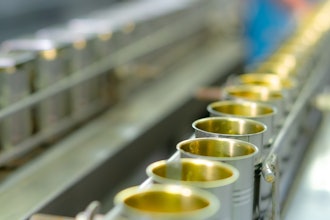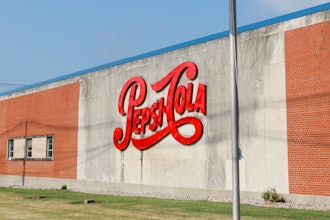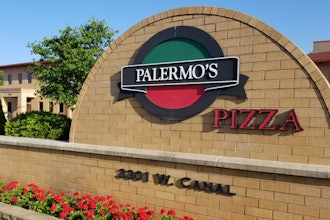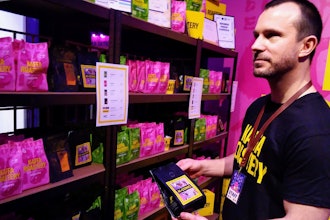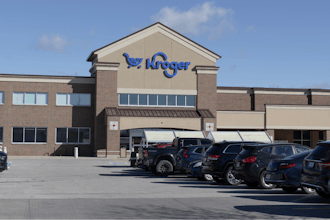Today, foodborne illness outbreaks are increasingly publicized in the news and discussed across social media. Illnesses like Norovirus, Salmonella, E. coli and Listeriosis have become familiar but unwelcome names for consumers in the United States.
Some of these food safety issues can be tied back to lapses at the production level. Reducing cross contamination risks is essential for running a successful food or beverage production business and keeping customers safe, healthy and trusting your brand. Therefore, it’s important for processors to invest in measures that help them better control food safety risks.
Listeria: A Persistent Problem
Besides significant death rates related to Listeria, the financial repercussions for a business are detrimental and may linger long after the contamination is resolved. There are costs associated with the disposal of tainted stock, product recall and deep cleaning. There may be industry or government agency-imposed fines, lawsuits brought by victims and plunging stock prices. Less easy to quantify is the reputational damage an outbreak can cause, which can result in lost consumer confidence.
Listeria is one of the most dangerous pathogens, as there is no universal cause and area of contamination, and there is no discernible difference in food appearance, taste or smell. It may result from contaminated processing equipment or failure of personal hygiene practices among staff. There are places in a facility where the risk of Listeria will be more prevalent, such as in cold and wet environments like cold rooms, chillers and areas where condensation occurs, including drip trays where bacteria can multiply. Eradication relies on killing the bacteria, as well as properly managing all sources of infection and environmental conditions that can help Listeria thrive.
Studies have shown that drains in new chicken processing facilities can become contaminated with persistent stains of Listeria within just four months. Listeria can also easily become aerosolized in the facility — even from an intermittent two-second spray of water1. If contaminated product leaves the facility, Listeria can continue to grow during transportation, warehousing and in-store display.
A Systemic Approach
Many organizations don’t like to admit that they have hygiene issues and may wrongly assume that a disinfectant product can solve the problem of Listeria on its own. However, it’s important to take a systemic approach to food safety and bring in a collaborative and trusted partner that can help diagnose the underlying cause, or causes, of food safety risks. A systemic approach involves the education of cleaning staff about the proper procedures for control of pathogens, in addition to smart protocols and consistent execution of cleaning and disinfecting.
Maintaining hygiene in a processing plant is a combination of defined tools and procedures, as well as knowledge of pathogen elimination and control. However, because the food processing industry has a very high staff turnover, it can be challenging to ensure everyone has up-to-date training. This can result in a lack of cleaning effectiveness and consistency.
Data can provide vital insight regarding lapses in food safety, which can help organizations implement better training. Food safety requires alignment of all variables including temperature, normative quality, microbiological and hygiene results. However, there is so much data generated from various data sources (new applications, new sensors or developments in real-time microbiology) that organizations need to integrate this information to deliver one version of the truth.
There are several factors putting pressure on manufacturers when it comes to food safety. Customers are increasingly demanding transparency about the origins of their food and expecting year-round availability of products. Meanwhile, processing plants may work with ingredients from numerous countries that have less stringent hygiene standards. This, combined with new regulations, new processes and increasingly global supply chains, makes monitoring food safety a vast responsibility.
Technology At Work
Early risk detection and rapid response are the ultimate preventative measures in the food processing industry. Adopting the correct systemic approach will help businesses ensure food safety, operational efficiency and desired shelf life. Companies need a system that identifies exactly where problems may occur before they happen.
The system should analyze processes associated with the different stages of the product’s journey, from production to final product storage. It will then provide a snapshot of areas that may harbor and promote the spread of pathogens. The system should also provide practical suggestions to mitigate the perceived risk, as well as statistics showing the financial impact and benefits that organizations can expect.
Diagnostic tools such as these help processing plants improve and maintain food safety standards during the manufacturing process. The system will allow facilities to monitor progress over time and measure the impact of corrective actions as they relate to improved food safety. By prioritizing areas of improvement and benchmarking the business against industry performance tools, organizations reduce the risk of contamination of the final product, resulting in a higher quality product.
Starting With Better Food Safety
Some businesses are reluctant to admit that a food safety or hygiene issue exists. Others believe that because they don’t yet have a problem, they never will. However, it is far better to be safe than sorry when it comes to foodborne pathogens and outbreaks. Organizations should implement systems that, unlike other audits, go beyond basic compliance scoring. Implementing a systemic approach to food safety can help reduce risks, making facilities safer and giving businesses more control in the face of uncertainty.
Fabrizio Tardioli is the Global Food Safety Solutions Director with Diversey’s Food & Beverage division.
1 https://pennstatefoodsafety.blogspot.com/2017/12/research-listeria-spreading-in-food.html










